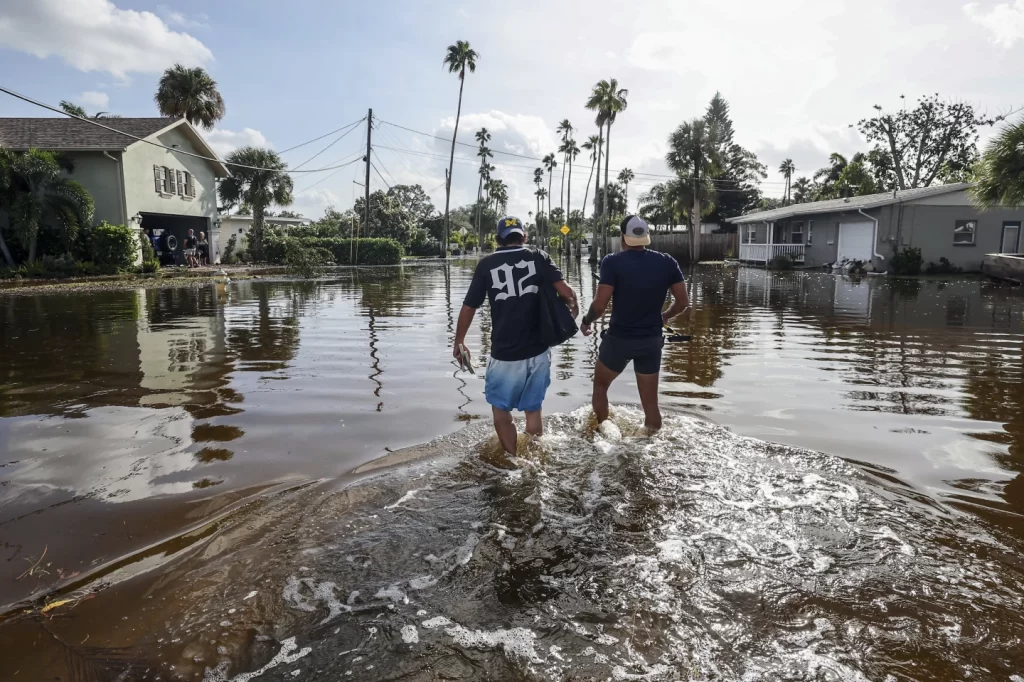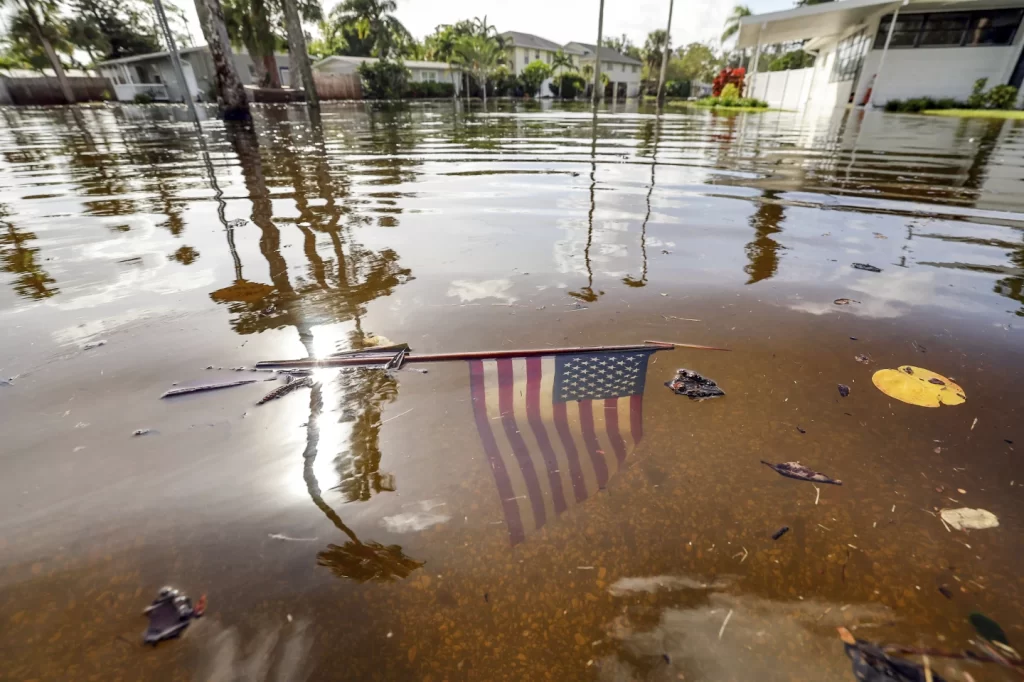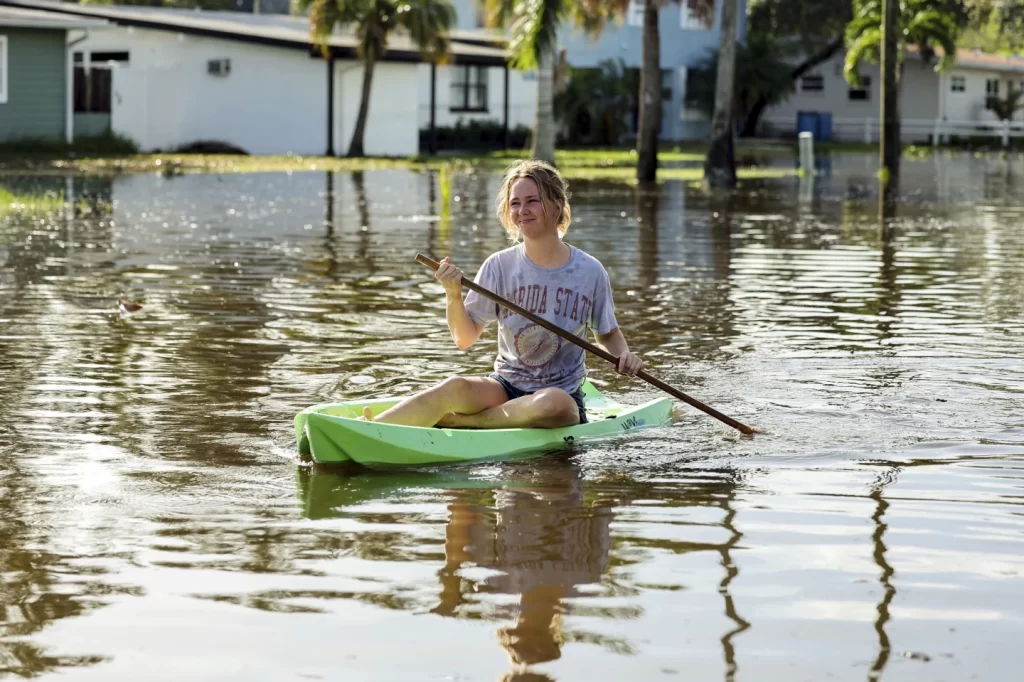Hurricane Helene, a powerful Category 4 storm, has left a trail of destruction across the southeastern United States, with at least 17 reported deaths and millions without power. Georgia Governor Brian Kemp announced Friday that at least 11 people in his state have been killed, while six others died in Florida and the Carolinas.

The hurricane made landfall late Thursday in Florida’s sparsely populated Big Bend area with maximum sustained winds of 140 mph (225 kph). The storm’s impact extended hundreds of miles northward, causing widespread flooding and damage.
Emergency crews are now rushing to rescue people trapped in flooded homes. Governor Kemp reported that dozens are still stranded in damaged houses across Georgia. The Federal Emergency Management Agency (FEMA) has deployed over 1,500 workers to assist in rescue operations, with 400 rescues reported by late morning Friday.

In Florida, Governor Ron DeSantis stated that the damage from Helene appears to be greater than the combined impact of Hurricanes Idalia and Debby last August. “It’s demoralizing,” DeSantis said, as communities face the prospect of rebuilding once again.
The storm’s effects were felt widely, with more than 4 million homes and businesses losing power across Florida, Georgia, and South Carolina. Flooding was reported as far north as North Carolina, where a lake featured in the movie “Dirty Dancing” overtopped a dam. Multiple hospitals in southern Georgia were left without power, while in Valdosta, Georgia, residents sought shelter in hotels as the storm passed, with winds howling and water seeping through light fixtures.

President Joe Biden announced he was praying for survivors as FEMA’s head traveled to the affected area. Local officials have launched boat rescues, warning residents about the dangers of floodwaters potentially containing live wires, sewage, and debris.
The hurricane’s path of destruction included a church in Perry, Florida, losing its newly replaced roof, just weeks before the congregation was set to return. Trees toppling onto homes caused fatalities in Charlotte, North Carolina, and Anderson County, South Carolina, while possible tornado activity in south Georgia resulted in two deaths.

As Helene weakened to a tropical storm, forecasters warned of continued heavy rainfall and the risk of mudslides and flash flooding in the Appalachian Mountains. The National Hurricane Center reported the storm was moving northeast at 32 mph (52 kph) with maximum sustained winds of 45 mph (75 kph) as of Friday morning.
This devastating hurricane marks the eighth named storm of the Atlantic hurricane season, which the National Oceanic and Atmospheric Administration predicts will be above average due to record-warm ocean temperatures. As communities begin to assess the damage and initiate recovery efforts, the full extent of Helene’s impact is still unfolding across the southeastern United States.



